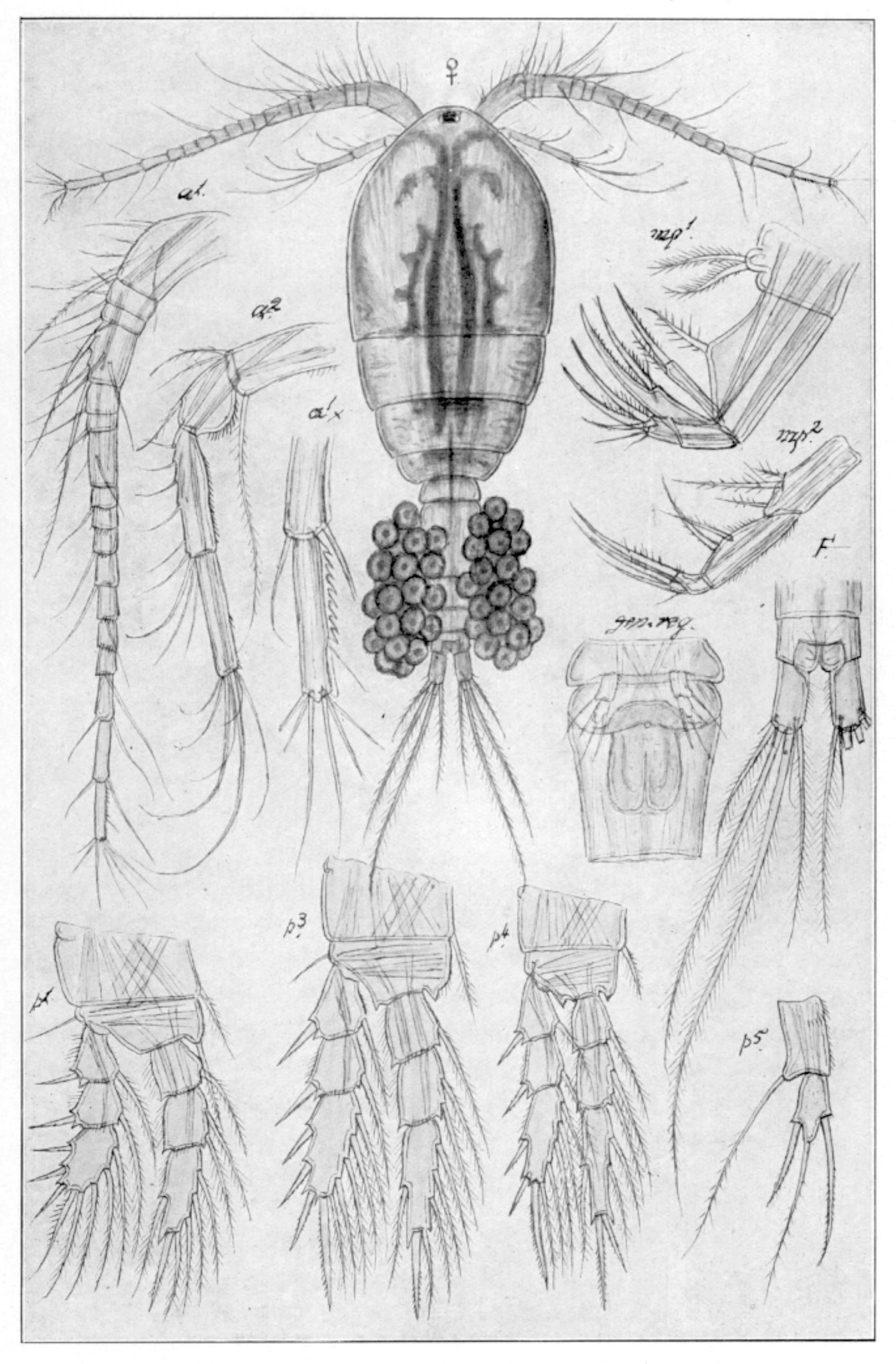Macrocyclops fuscus
Macrocyclops fuscus is a large littoral copepod having a dark fuscous colour. The inner edges of the caudal branches are densely covered by hair. It is considered as moderate acid sensitive.
Key characteristics
Macrocyclops fuscus (female)
Macrocyclops fuscus is one of largest copepods in the littoral. Its cephalothorax has an oval form, with the greatest width in front of the middle. The last pair of leg (p5) in Macrocyclops sp. are easily distinguished from other cyclopoids by the long setae on the last segment. The furca in M. fuscus is short, approximately twice as long as wide and the inner edges of the caudal branches are densely covered by hair. The anterior antennas are composed of 17 joints reaching to the end of the third segment of the cephalothorax. The last segment of the antenna has a thin hyaline plate with the proximal half coarsely denticulated. It has a dark fuscous colour, often with a greenish or bluish tinge.
Female: Length 1.8–4.0 mm
Male: Length 1.0 mm
Ecology and distribution
M. fuscus is widely distributed in Norway and found in about 13 % of the water bodies. It occurs with a relatively high frequency up to 1000 m a.s.l, but above this altitude there is only one record. In contrast to M. albidus it is most common in acidic water bodies, and when pH is between 4.5 and 6.0 it occurs with a frequency of more than 20 %. M. fuscus is found in electrolyte poor as well as in electrolyte rich water.
| Vitenskapelig navn | < 4,5 | 4,5 - 4,9 | 5,0 - 5,4 | 5,5 - 5,9 | 6,0 - 6,4 | 6,5 - 7,0 | 7,0 - 7,4 | > 7,5 |
|---|---|---|---|---|---|---|---|---|
| 8 | 33,2 | 24,4 | 26,8 | 15,1 | 8,8 | 9,9 | 16,7 |
| Vitenskapelig navn | < 1,0 | 1,0 - 1,4 | 1,5 - 1,9 | 2,0 - 2,9 | 3,0 - 3,9 | 4,0 - 4,9 | 5,0 - 6,9 | 7,0 - 9,9 | > 10,0 |
|---|---|---|---|---|---|---|---|---|---|
| 7,6 | 11,3 | 21,6 | 16,4 | 18,4 | 14,8 | 10,6 | 14,8 | 24,2 |
| Vitenskapelig navn | < 0,01 | 0,01 - 0,09 | 0,1 - 0,9 | 1,0 - 9,9 | 10,0 - 99 | 100 - 999 | > 1000 |
|---|---|---|---|---|---|---|---|
| 12,7 | 11,9 | 9,9 | 18 | 14,3 | 13 | 17,4 |
| Vitenskapelig navn | < 100 | 100-299 | 300-499 | 500-699 | 700-999 | >1000 |
|---|---|---|---|---|---|---|
| 10,7 | 25,5 | 14,7 | 10,6 | 9,8 | 0,4 |
Look alikes
Macrocyclops albidus

